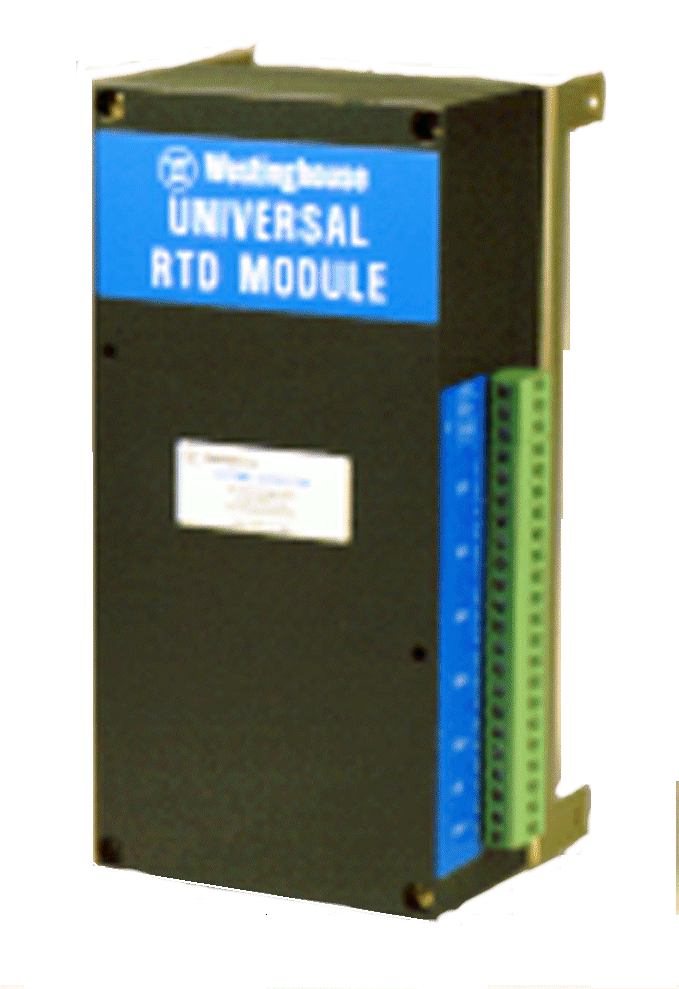universal rtd module
hot
topics

what is it
modified 09/24/98
the universal rtd module is an electronic resistance temperature detector designed to monitor as a standalone device or in conjunction with the mp-3000. the universal rtd module can be used to monitor, for example, transformer temperature and relay that information back to a remote computer or programmable controller. when used in conjunction with the mp-3000, the universal rtd module enhances the unit's motor protection ability. in addition to the mp-3000, the universal rtd module can be used with the iq 1000 ii, iq 1000 and the iq 2000.
the universal rtd module can be used to monitor as many as 11 rtd inputs - four groups consisting of six motor windings, two motor bearings, two load bearings, and one auxiliary. the universal rtd module can be programmed to accept any of the following types of rtd inputs: 10 ohm copper, 100 ohm platinum, 100 ohm nickel, and 120 ohm nickel, per group.
the universal rtd module transmits information using three conductor shielded cables, with a maximum cable distance of 500 feet (152 m). it can also transmit to an mp-3000, or iq 1000 ii using a fiber optic link, with a maximum distance of 400 feet (122m).
applications
monitors as a standalone device utilizing a bponi communications module or in conjunction with the mp-3000, iq 1000 ii, iq 1000, or iq 2000 motor protective relay.
catalog number: urtd
style number: 2d78548g05
when connecting an iq 1000 ii to the universal rtd module using the fiber optic
link, a separate fiber optic cable is required. the fiber optic cable may be no longer than 400 feet in length.
this cable is available from hewlett packard. for details on this fiber optic cable, reference the following link
to hp: http://www.hp.com/hp-comp/fiber/hfbrrxxyyy.html. for additional technical data on this fiber cable, an adobe document is available here![]() .
.